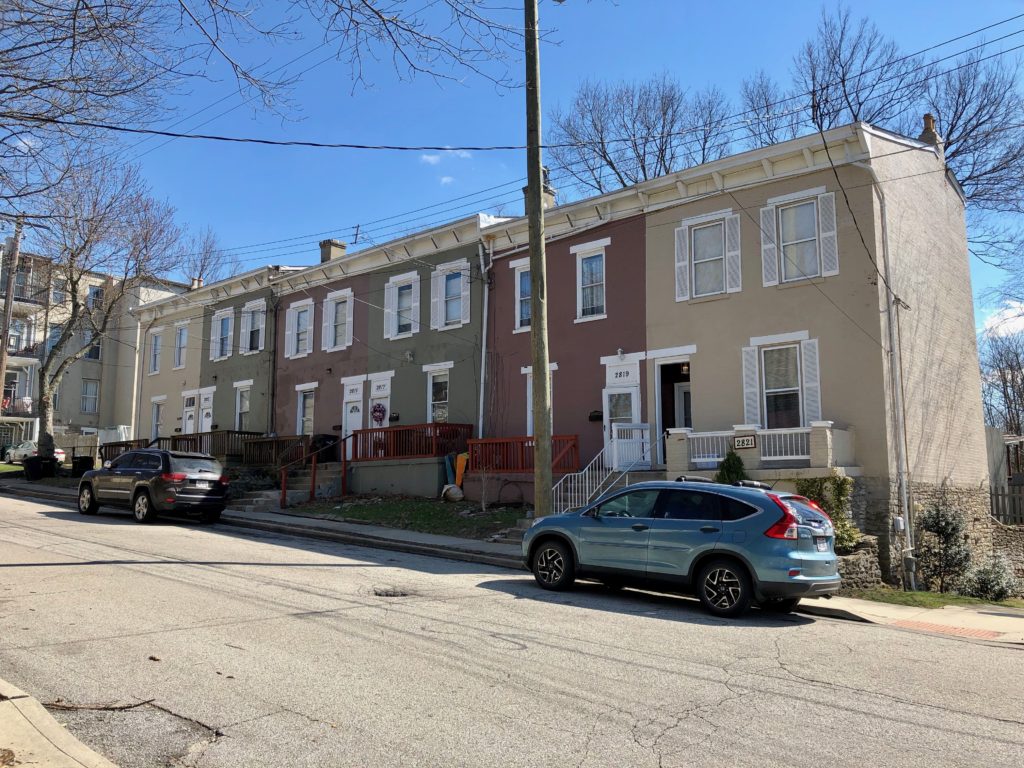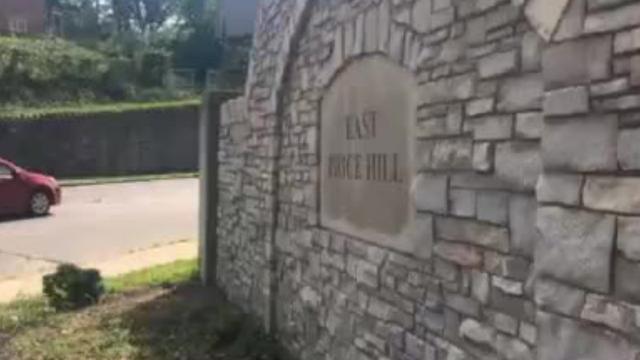While many of the historically Appalachian neighborhoods have been transformed by economic and demographic shifts of the past 30 years, the Appalachians who moved to East Price Hill still have a significant presence. With the Urban Appalachian Community Coalition offices just down the hill, we remain deeply involved in the area. That said, East Price Hill is in the midst of rapid changes that are transforming the neighborhood in profound ways.
Anyone who has grown up in greater Cincinnati knows the stereotype of Westsiders who identify with their Catholic high school before all else. Core member Mike Maloney explained that the German and Irish Roman Catholic influence in East Price Hill once completely dominated the neighborhood: “The two main churches were Holy Family and Saint Lawrence, and people who lived in East Price Hill identified where they lived with their parish.”
The urban Appalachian presence in East Price Hill began during the 1970s, as Mike Maloney told me: “Appalachians began to populate the neighborhood as they moved up the hill from Lower Price Hill and Over-the-Rhine.” Maloney went on to say that two things were occurring at the same time: “This was a natural movement of people. As older residents of East Price Hill diminished in numbers, fourth and fifth generation Irish and German Catholics were becoming upwardly mobile and moving further out to places like Delhi.”

At the same time, the movement of urban Appalachians and African-Americans into East Price Hill redefined the neighborhood. For many years, urban Appalachians were the largest population of the neighborhood. The movement of Appalachians into East Price Hill was not without problems and conflict. Mike Maloney told me he had to “act as something of an interpreter between the Appalachian population and the older residents of the community.”
According to the Social Areas of Cincinnati one of “the largest concentration of Appalachians in Cincinnati includes East Price Hill.” Mike said the real estate crash in 2008 seriously impacted urban Appalachians, and many of them lost their homes. This crisis led to the expansion of Santa Maria in the neighborhood as a resource for people struggling through the economic crisis, and it also led to the founding of Price Hill Will as another community-based organization designed to empower residents of East Price Hill. The crash of 2008 was a time of crisis, but it was also a time in which the people of East Price Hill shifted their focus to neighborhood organizing and development. Through much of this time, the Urban Appalachian Council provided GED education centers and services to individuals.
In recent years, East Price Hill has become something of a microcosm of the growing pains of a twenty-first century city. The population of East Price Hill has become more multicultural than any other part of the greater Cincinnati. Rachel Hastings, Executive Director of Price Hill Will, said that “East Price Hill is now the most ethnically diverse neighborhood in Cincinnati.” In recent years, a large Hispanic population has joined the community of East Price Hill. Even as urban Appalachians remain a guiding force in the area, the newer migration patterns are changing the cultural make-up of the area. This, according to Hastings, “is extremely exciting and it also presents a challenge. No one is a majority right now, and we are working toward finding ways to make everything work.”

A major step toward making things work is the new Warsaw Avenue Creative Campus. This is a huge step for East Price Hill, and a gift to the many communities of people who currently define the area. The Warsaw Avenue Creative Campus will occupy the entire 3000 block of Warsaw Avenue. Rachel Hastings told me Price Hill Will originally wanted to buy the old firehouse on Warsaw, but the owner would not sell unless someone purchased all the buildings. “With some creativity, and by partnering with other organizations, we raised the funds necessary to buy the entire block and develop the Creative Campus. In addition to serving the MYCincinnati Youth Orchestra, the Warsaw Avenue Creative Campus will serve as a central site for community members to come together. Hastings explained that they are partnering with entrepreneurs for food service and the second floor of the main buildings will have affordable apartments. This, along with Arco, the meeting facility in the old Masonic Lodge Building, will provide East Price Hill will with places for community engagement and a central site through which the many different communities that make up East Price Hill can come together as they define the neighborhood for years to come.
Renovations to the East Price Hill Recreation center have also created a nexus for community engagement. Nancy Laird said emphatically that the “new rec center is a crucial meeting place for the people of East Price Hill.” Between the Rec Center and the Creative Campus, East Price Hill is taking on a leadership role in building communities from within the diverse groups that have come to define greater Cincinnati. Nancy also said the public library building serves as another destination for the community. Readers may remember that it was the Price Hill Branch of the Public Library of Greater Cincinnati and Hamilton County that hosted a Zoom presentation on their resources on Appalachian culture and history, complete with links to the Frank Foster Library at UACC and the archives at Berea College.
All of the changes in East Price Hill have brought some of the same rough edges that urban Appalachians experienced when they first began moving into the neighborhood. Not everyone completely understands each other. All of this is to be expected with such massive changes to a small neighborhood. The Urban Appalachian Community Coalition maintains a presence amid this, particularly with Nancy Laird and partner organization Santa Maria Community Services which expanded up to Warsaw Avenue to serve the Hispanic community. The developments in East Price Hill like the Warsaw Avenue Creative Campus and the Recreation Center would appear to buck the gentrifying trends of much of the rest of the city. It appears the community-oriented ideals that urban Appalachians attached to the neighborhood remain guiding features of East Price Hill as the neighborhood forges on in the forefront of twenty-first century Cincinnati.
Mike Templeton is a writer, independent scholar, barista, cook, guitar player, and accidental jack-of-all-trades. Check out his profile in UACC’s new Cultural Directory. He lives in downtown Cincinnati with his wife who is a talented photographer. They spend their free time walking around the city snapping photos. She looks up at that the grandeur of the city, while Mike always seems to be staring at the ground.

